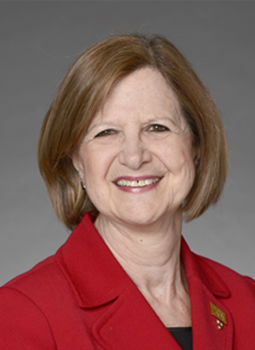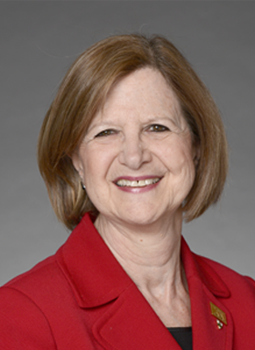In my last column, I wrote about how RNAO – by design – helps nurses to take on leadership roles. I talked about how the association supports and fosters the aspirational goals of individual nurses. In this column, I want to shift that focus from the individual nurse to nursing as a collective, and talk about how RNAO – by design again – is fostering leadership and building strength more broadly.
“Powering” the profession is a concept I introduced to you in my column exactly one year ago. I differentiated “powering” from “empowering.” Let me now expand on this concept with an analogy.
Imagine you’re standing in a circle and you’re bouncing a ball up and down without engaging anyone else in the circle. You may be focused and engaged, but everyone else is simply watching. Now, imagine you bounce that ball towards someone else in the circle, and he/she then bounces it towards a third person, then a fourth, and then a fifth becomes engaged. Suddenly, the dynamic of the circle has changed. Each person is powering another to bounce the ball, and together they are powering the collective. This notion of building on each person’s strength to power the collective is based on social movement thinking, an approach adopted in all our work for the past two decades.
When we created the executive network officer (ENO) structure in the late 1990s, the vision was to nurture members to take on leadership positions at the local level. Through this work, we motivate and prepare leaders to inspire fellow members towards a shared vision. We provide tools and strategies that serve members, not home office. The aim is to constantly build capacity to mobilize members to shape the political process and public opinion. RNAO’s assembly and ENO leaders, armed with knowledge and team building approaches, have embraced the role in creative ways, and have expanded their own and others’ thinking to challenge the status quo.
The beauty of this approach is that we constantly intersect policy analysis, advocacy, and best practice guidelines (BPG) to deliver great things in Ontario and beyond. One example of this is supervised injection services (SIS).
RNAO published its methadone BPG, and then a BPG on substance use. From there, the association joined Toronto Public Health (TPH) in pursuing SIS as part of a comprehensive program for persons who use illegal drugs. SIS clinics were approved and David McKeown, then TPH medical officer of health, asked RNAO for a SIS BPG. When the new government was elected this past June, these clinics were in limbo. RNAO, as a collective, began advocating, sharing the facts on evidence-based practice alongside evidence-based policy to sustain SIS.
We worked closely with Health Minister Christine Elliott, as well as RNAO members and other activists. We kept front-and-centre people like Amy Wright – a harm reduction professional with lived experience who was a vital part of the BPG development and launch. RNAO members Cori and Leigh Chapman – mother and sister to Brad Chapman, whose untimely death became the focus of a coroner’s inquest – have played a courageous and critical role keeping us grounded in pursuing the painful truth about gaps in our health system that fail our most vulnerable.
RNAO takes great pride in our critical role in sustaining SIS – now called consumption and treatment services (CTS). Collectively, we convinced Premier Doug Ford to keep these services when he was set on eliminating them.
For many years now, RNAO has embraced the knowledge-to-action framework approach in its BPG work. If you look at any BPG toolkit, this linear approach takes us from point A to point B, and is an important framework that facilitates a systematic analysis and action plan. By contrast, social movement thinking is more like “waves” in that it takes an issue and breaks it down in a more disruptive way. Social movements emanate feelings and create a collective identity. RNAO’s collective identity can be seen in our RN, NP and NS (nursing student) pins worn by members with pride. BPSO pins are now also being worn with pride at home and abroad.
These two approaches provide the ‘what’ and ‘how’ when dealing with issues, and create a healthy tension that propels transformation that sticks.
Let’s keep this momentum going. With engaged members like you, a courageous board and assembly, committed ENOs, and expert staff, we are unstoppable. We are powered by the conviction of our values and the strength of the evidence to tackle issue after issue.
We are mobilizing in a way that only social movements can: powered to improve practice and policy for nurses and the public we serve.


